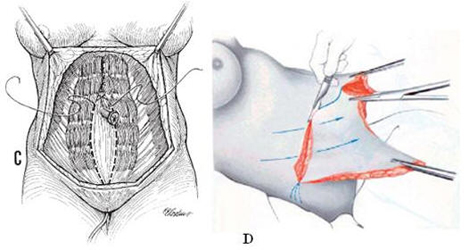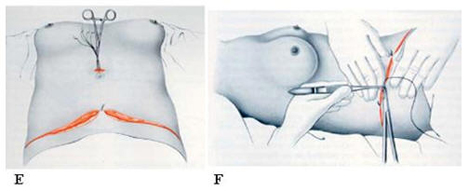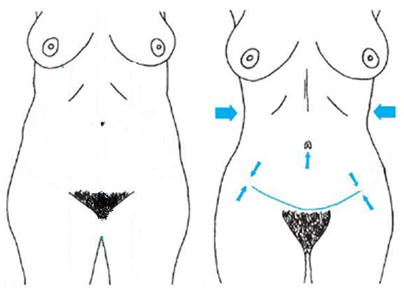|
|
| |
ARTICLES
Vibrolipoabdominoplastia
History:
Abdominoplasty The term corresponds to a set of surgical techniques
for correction of the abdominal region. The first surgery of this
kind was made by Kelly in 1899, for correction belly apron. From
this date, numerous specialists contributed to the advancement and
refinement of techniques, which include several Brazilian and Alvear,
Borzola, Psillakis, Pitanguy, Saldanha.
The term Vibrolipoabdominoplastia, corresponds to a set of
techniques that includes the association of Vibroliposuction +
abdominoplasty.
The VIBROLIPOABDOMINOPLASTIA, technique used in Brazil since
1999 with excellent results. With one of these devices as Lipomatic
called by the input and output of compressed air in a small cylinder
makes the tube 3-6 mm diameter is subjected to forward and backward
movements ranging from 3-6mm excursion. Thus adipose tissue (fat) is
liquefied and aspirated
Plastic surgery of the abdomen are common in the anterior abdominal
wall that is in the plane formed by the skin and subcutaneous
tissue.
The plastic surgeon considers three basic elements for the
realization of a Vibrolipoabdominoplastia skin, subcutaneous tissue
and muscular portion. Thus the elasticity and sagging skin and
excess fat tissue and its distribution are initially analyzed.
The Vibrolipoabdominoplastia is indicated in cases of sagging skin
large, variable adipose tissue and muscle diastasis of the rectus
and oblique abdominal muscles.
 |
|
Figure 1. A, Vibroliposuction abdominal wall, lower
B Incision more descolamento Scarpa's fascia at the
level of the rectus abdominis. |
| |
|
 |
|
Figure 2. C, Plication of the rectus abdominis. D,
amputation of excess skin flap. |
| |
|
 |
|
Figure 3. E, Onfaloplastia more approximating the
top and bottom flaps. F, Synthesis planes. |
| |
|
 |
|
Figure 4. PREOPERATIVE POSTOPERATIVE |
Postoperative care?
The patient should remain at
rest for 24-48 hours until
drains are removed. The
stitches will be removed
7-10 days. The use of
modeling elastic band
usually be initiated in the
immediate postoperative and
remained for a period
ranging up to 3 months.
When I can back my job?
Normally at 7 days in jobs
that do not require physical
exertion or exposure to
sunlight.
I can be denaje node in
the postoperative period?
The role of this em
beautician minimize the
effects of the changes that
occur after surgery,
The beautician can be quite
effective in the task of
educating the patient and
family regarding daily care
of hygiene and protection,
through practical
demonstration stages as
Cleaning the skin with the
proper use of moisturizers
daylight and at night. The
most important treatments
performed are abulatoeiales
massage, fitness facial,
skin hydration and scar
camouflage.
The main effects that lead
to this maneuver are:
- Increases blood
circulation
- Mobilisation of the
interstitial fluid
- Prevention in the
formation of fluid
collections ..
- Decreased or increased
skin sensitivity.
|
|
|
|